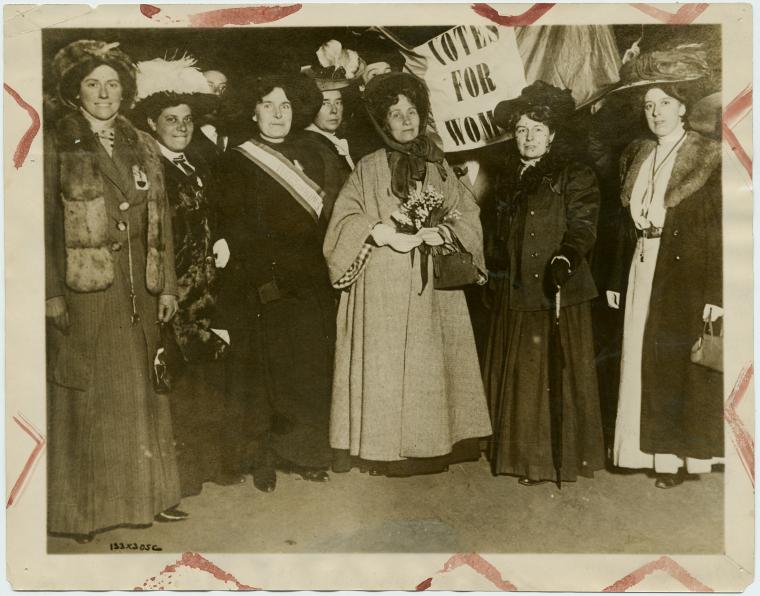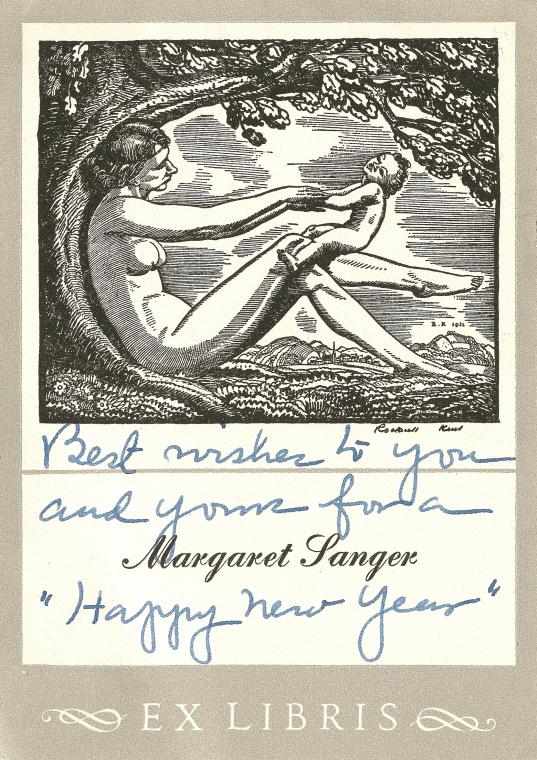Reader’s Den, Women's History Month
Reader's Den: The Secret History of Wonder Woman, Part 1
Welcome to the March 2015 Reader's Den! This month we'll be reading The Secret History of Wonder Woman by feminist historian Jill Lepore. Lepore details the life story of Wonder Woman's creator, William Moulton Marston. Marston had an interesting origin story himself, succeeding at nearly everything he tried, evading suicide after a bout with poison (one of Wonder Woman's earliest foes is a Dr. Poison), helping to invent the lie detector test and championing its use in the courtroom and elsewhere. The lie detector test features in several Wonder Woman comics and served as the inspiration for her truth-telling lasso.

From his early years at Harvard, Marston was influenced by early suffragists and feminists, including British suffragette Emmeline Pankhurst. In the 1920s, Marston and his wife, Sadie Elizabeth Holloway, brought into their home Olive Byrne, the niece of Margaret Sanger. Sanger, one of the most influential feminists of the twentieth century was an early and stalwart supporter of birth control. She also had a decades-long affair with H.G. Wells. Her charisma and influence made her like a movie star of the times, though when she starred in a silent film entitled Birth Control, it was suppressed (p. 95).
Here's a link to a Google map of the places Sanger lived and worked in NYC. Marston was also influenced by Charlotte Perkins Gilman, author of "The Yellow Wallpaper" and, moreso, Inez Haynes Gillmore's 1914 novel Angel Island which inspired Wonder Woman's origin story "in which Captian Steve Trevor crashes his plane on Paradise Island and Diana, princess of the Amazons, falls in love with him—an attachment that is both in violation of Amazon law and a threat to her independence. (p. 86-87)" Marston, Holloway, and Byrne entered into a polyamorous relationship and raised their children together, though professionally and officially, Marston and Byrne worked to keep their alliance a secret.
Their relationship grew out of Marston's theories of love, which he explored in his book, Emotions of Normal People, co-authored by Marston, Holloway, and Byrne, yet only credited to him (p.126). Olive Byrne wore metallic wrist bracelets after the birth of her child, very similar to the ones that Wonder Woman uses to fend off bullets, and continued to wear them constantly.
Wonder Woman's character, as defined by Marston, is very much an amalgamation of his disparate interests, personal life and strong belief in the equality of women. As he wrote in a press release for Wonder Woman in the summer of '42: "The only hope for civilization is the greater freedom, development and equality of women in all fields of human activity." Intending Wonder Woman "to set up a standard among children and young people of strong, free, courageous womanhood; and to combat the idea that women are inferior to men, and to inspire girls to self-confidence and achievement in athletics, occupations and professions monopolized by men."
Wonder Woman would go on to become the first female superhero to have her own comic magazine and prior to that, to feature prominently on Justice League covers despite her being the team’s secretary. "Frankly, Wonder Woman is psychological propaganda for the new type of woman who, I believe, should rule the world," Marston wrote.
Read E-Books with SimplyE
 With your library card, it's easier than ever to choose from more than 300,000 e-books on SimplyE, The New York Public Library's free e-reader app. Gain access to digital resources for all ages, including e-books, audiobooks, databases, and more.
With your library card, it's easier than ever to choose from more than 300,000 e-books on SimplyE, The New York Public Library's free e-reader app. Gain access to digital resources for all ages, including e-books, audiobooks, databases, and more.
If you don’t have an NYPL library card, New York State residents can apply for a digital card online or through SimplyE (available on the App Store or Google Play).
Need more help? Read our guide to using SimplyE.
